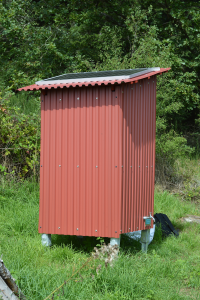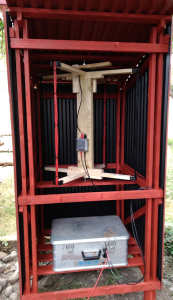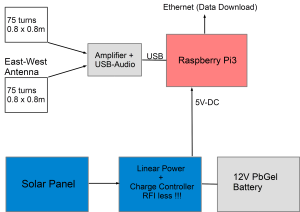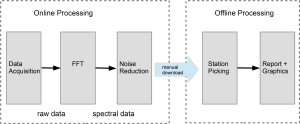Multichannel SID Receiver
A multi-channel SID receiver detects changes in the ionosphere. The receiver is placed in a wooden cabinet, in an environment with low EMI. AD conversion is made by a standard USB audio device, connected to a Raspberry Pi 3 controller. Two antennas in N-S and E-W direction are connected to the stereo microphone input of the audio device.
When using a conventional solar charge controller, significant radio interference problems occurred. Therefore, a simple linear regulator was built to charge the 12V battery and supply the Raspberry Pi with 5V DC. Since the usable sampling rate of the USB audio device is limited to 48kHz due to the device driver, observations can only be performed up to 24kHz. To change this is subject of further development.
After data acquisition, a Fast Fourier Transform (FFT) is performed and five of each of the calculated spectra are averaged for noise reduction. These averaged spectra are stored locally and made available for manual download. For offline processing, the signal strengths for the individual stations are taken from the spectra and displayed as time series.
Low-frequency interference lower than 15kHz, presumably from the power supply network, photovoltaic systems in the vicinity and agricultural facilities make it necessary to restrict the frequency range to 15.0-24kHz. Different changes in the signal strength of the individual stations during a SID event allow conclusions to be drawn about position and strength of the ionization.



